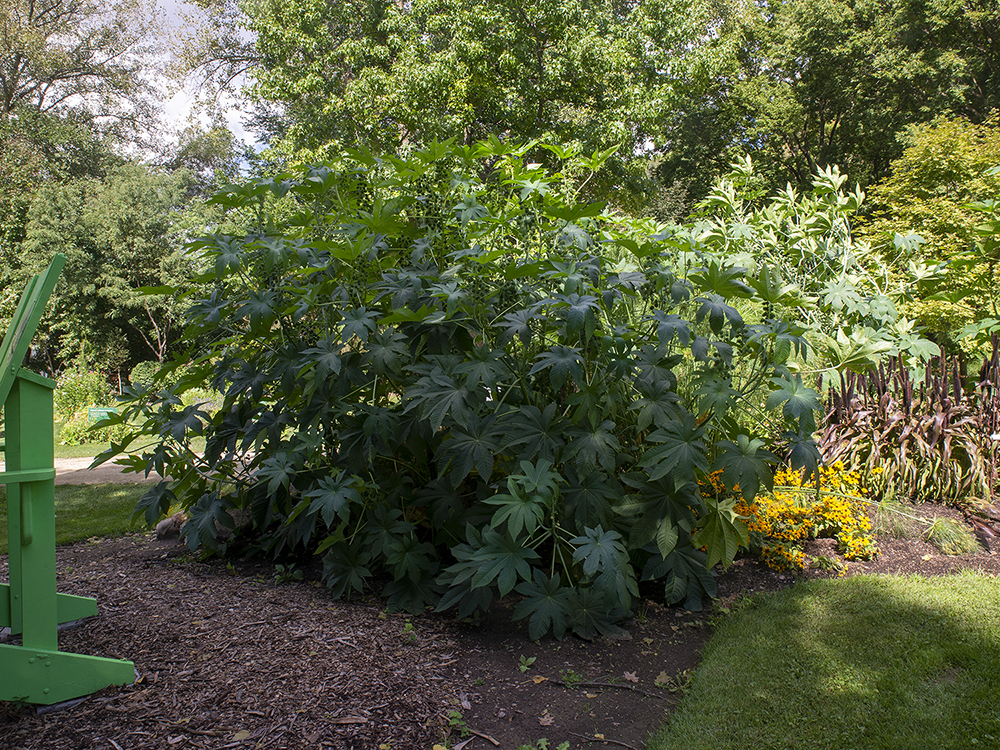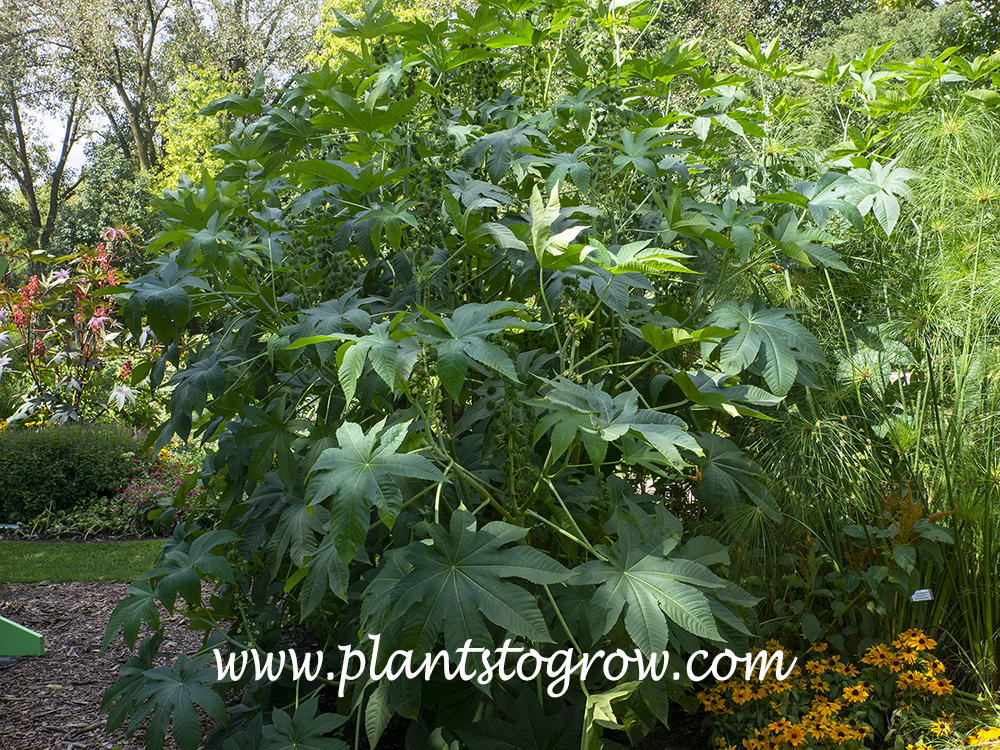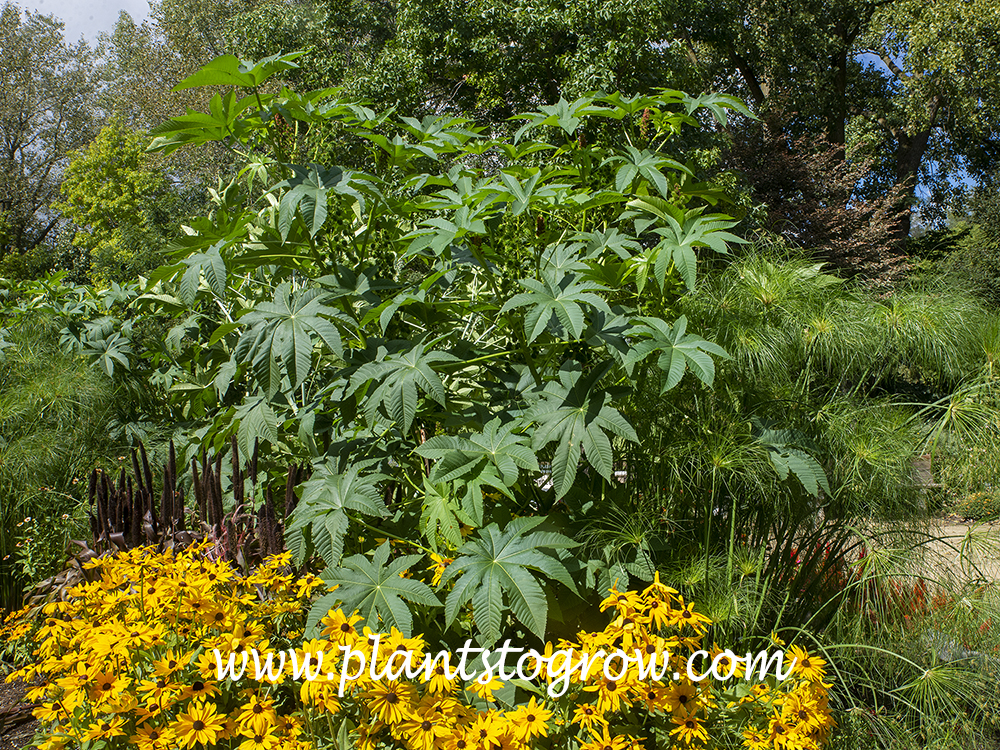| Description | 'Zanzibariensis' Castor Bean (Ricinus communis Zanzibariensis) is an extremely large plant with large palmate leaves. Seeds are extremely toxic. An heirloom plant circa 1870. |
|---|---|
| Plant Type | Perennial Tender, Tropical herbaceous plants, Tender perennials often grown as annuals |
| Hardiness Zone | 9-11 |
| Sunlight | full |
| Moisture | average |
| Soil & Site | average |
| Flowers | lack petals, found in terminal panicles, male part made of branched filaments found at the base, female flower forms feathery pistils |
| Fruit | The seeds are formed in a spiky fruit. When ripe, the rather large, bean-like seeds will be shot (dehisce) many feet from the pod. Seeds are very ornamental, each having varied patterns of tan and lighter strikes on the brown seed. Has a spongy caruncle at one end of the large seed. |
| Leaves | palmately lobed, bright green, toothed, and glossy. |
| Dimensions | 15 by 15 feet or larger (HS) |
| Propagation | seeds, soaked in water, can be seeded directly or seeded in a peat pot |
| Native Site | Originally native to Africa |
| Misc Facts | The seeds and many other parts of this plant are poisonous but the oil isn't. Castor oil is used in varnish, paints, lamp fuel, lubricant, and as a Snake Oil elixir. The genus name Ricinus comes from the word ricinus which means tick, the appearance of the seed. They do look like large blood swollen Wood Ticks that can be found on animals. During the middle ages, the leaf of this plant was referred to as Palma Christi (the Hand of Christ). The toxin in castor seeds is ricin (RYE-sin) |
| Author's Notes | I have seen this Castor Bean on a few occasions and they are very large. |
| Notes & Reference | #48-Harrowsmiths Annual Garden (Bennett and Forsyth), #51-Armitage's Manual of Annuals, Biennials, and Half-Hardy Perennials (Alan Armitage) |

Cart



